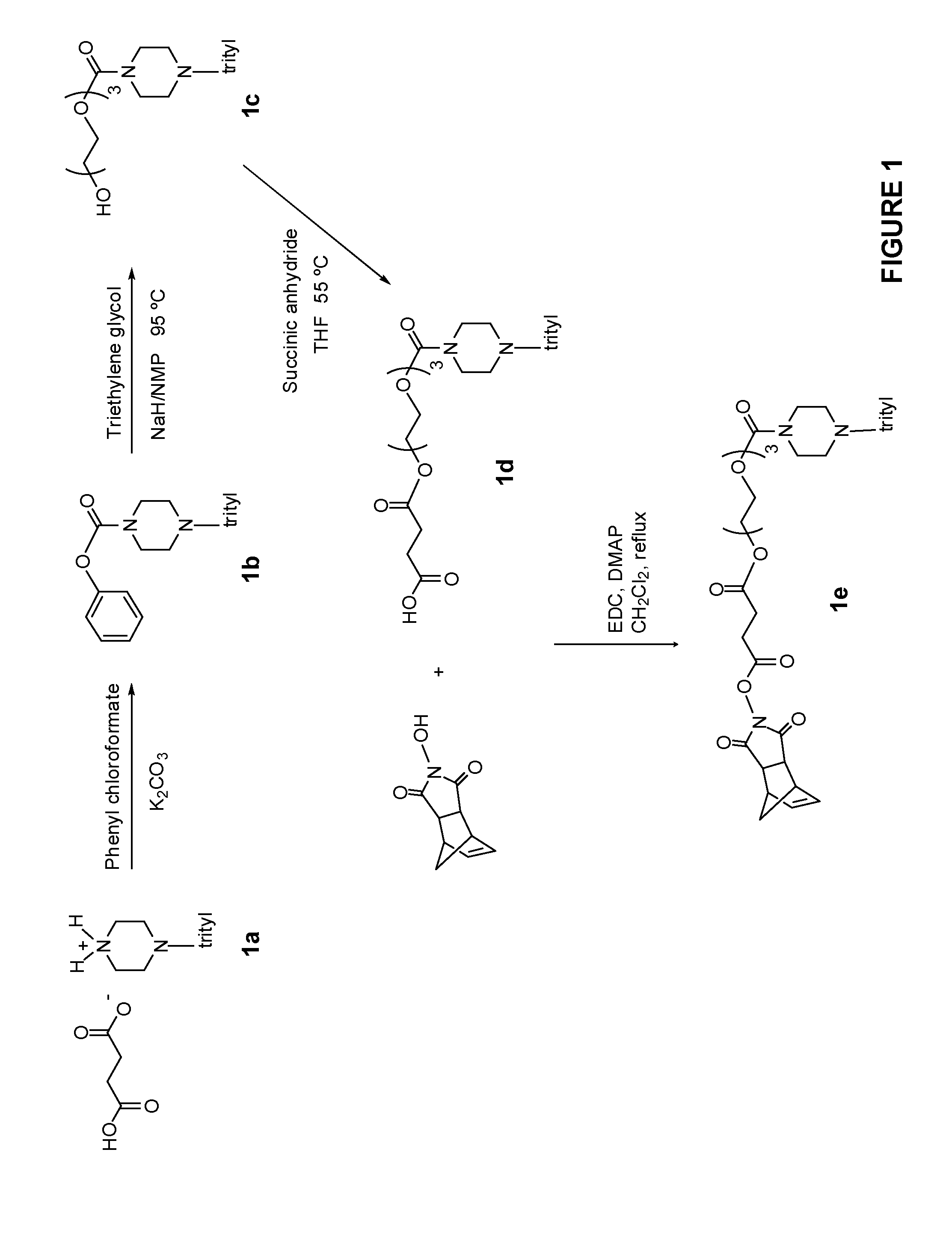Functionally-modified oligonucleotides and subunits thereof
a technology of oligonucleotides and subunits, applied in the field of oligonucleotide compounds, can solve the problems of affecting the performance of antibacterial agents, hampered the performance of such nucleic acid analogues as antisense or antigene drugs, and hampered the use of stereoisomeric complexity, etc., to achieve enhanced cell delivery, potency and/or tissue distribution, and effective delivery to the target organs
- Summary
- Abstract
- Description
- Claims
- Application Information
AI Technical Summary
Benefits of technology
Problems solved by technology
Method used
Image
Examples
example 3
1-(1-(Chloro((6-(5-Methyl-2,4-Dioxo-3,4-Dihydropyrimidin-1(2H)-yl)-4-Tritylmorpholin-2-yl)Methoxy)Phosphoryl)Piperidin-4-yl)-1-Methylpyrrolidin-1-Ium Chloride
[0790]
[0791]The title compound was synthesized in a manner analogous to that described in Example 2 to afford the title compound (0.6 g) as a white solid. ESI / MS calcd. for 1-(4-nitrophenyl)piperazine derivative C49H60N8O7P 903.4. found m / z=903.7 (M+).
example 4
((2S,6R)-6-(5-Methyl-2,4-Dioxo-3,4-Dihydropyrimidin-1(2H)-yl)-4-Tritylmorpholin-2-yl)Methyl (4-Methylpiperazin-1-yl)Phosphonochloridate
[0792]
[0793]To a cooled (ice / water bath) DCM solution (10 mL) of phosphorus oxychloride (1.02 mL, 11.0 mmol) was added dropwise 2,6-lutidine (3.49 mL, 29.9 mmol) then a DCM solution (10 mL) of methyl piperazine (1.00 g, 10.0 mmol) was added dropwise and stirring continued for 1 h. A DCM solution (10 mL) of Mo(Tr)T (2) (4.82, 10.0 mmol) and NMI (79 μL, 1.0 mmol) was added and stirred 4 h then loaded directly onto column. Chromatography [SiO2 column (80 g), DCM / Acetone with 2% TEA eluant (gradient 1:0 to 0:1)] to afford the title compound (0.8 g) as a white foam. ESI / MS calcd. for 1-(4-nitrophenyl)piperazine derivative C43H48N7O8P 834.4. found m / z=835.5 (M+1).
example 5
((2S,6R)-6-(5-Methyl-2,4-Dioxo-3,4-Dihydropyrimidin-1(2H)-yl)-4-Tritylmorpholin-2-yl)Methyl Morpholinophosphonochloridate
[0794]
[0795]To a cooled solution (ice / water bath) of phosphorus oxychloride (19.1 mL, 205 mmol) in DCM (410 mL) was added dropwise 2,6-lutidine (54.2 mL, 465 mmol) then Mo(Tr)T (2) (90.0 g, 186 mmol) portionwise over 15 min (int. temp. 0-10° C.) and stirred. After 5 min, a DCM solution (205 mL) of morpholine (17.9 mL, 205 mmol) was added dropwise over 15 min (int. temp. 0-8° C.) and stirred. After 15 min, additional DCM solution (10 mL) of morpholine (0.500 mL) was added, stirred 5 min then washed with citric acid solution (300 mL×3, 10% w / v aq), dried (MgSO4), filtered and concentrated to a viscous oil which was loaded directly onto column. Chromatography [SiO2 column (330 g), hexanes / EtOAc eluant (gradient 1:0 to 0:1)] to afford the title compound (78.5 g, 65% yield) as a white foam. ESI / MS calcd. for 1-(4-nitrophenyl)piperazine derivative C43H48N7O8P 821.3. fou...
PUM
 Login to View More
Login to View More Abstract
Description
Claims
Application Information
 Login to View More
Login to View More - R&D
- Intellectual Property
- Life Sciences
- Materials
- Tech Scout
- Unparalleled Data Quality
- Higher Quality Content
- 60% Fewer Hallucinations
Browse by: Latest US Patents, China's latest patents, Technical Efficacy Thesaurus, Application Domain, Technology Topic, Popular Technical Reports.
© 2025 PatSnap. All rights reserved.Legal|Privacy policy|Modern Slavery Act Transparency Statement|Sitemap|About US| Contact US: help@patsnap.com



